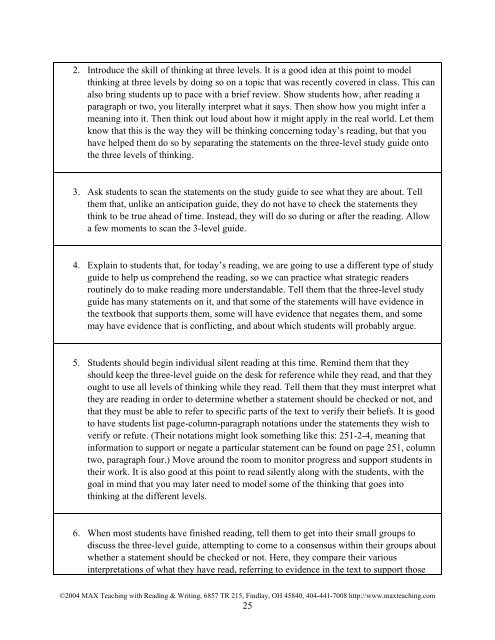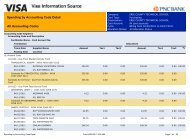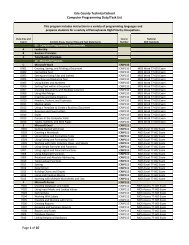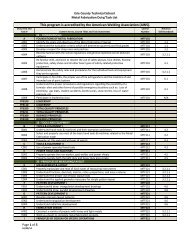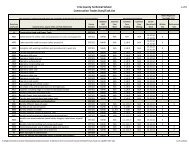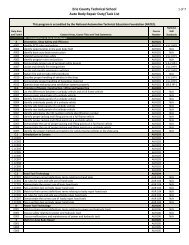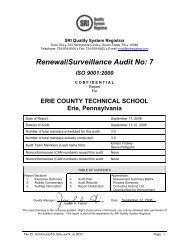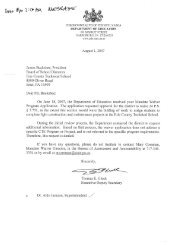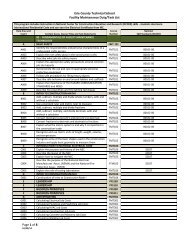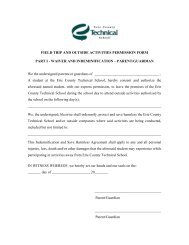MAX Teaching with Reading and Writing - Ects.org
MAX Teaching with Reading and Writing - Ects.org
MAX Teaching with Reading and Writing - Ects.org
You also want an ePaper? Increase the reach of your titles
YUMPU automatically turns print PDFs into web optimized ePapers that Google loves.
2. Introduce the skill of thinking at three levels. It is a good idea at this point to modelthinking at three levels by doing so on a topic that was recently covered in class. This canalso bring students up to pace <strong>with</strong> a brief review. Show students how, after reading aparagraph or two, you literally interpret what it says. Then show how you might infer ameaning into it. Then think out loud about how it might apply in the real world. Let themknow that this is the way they will be thinking concerning today’s reading, but that youhave helped them do so by separating the statements on the three-level study guide ontothe three levels of thinking.3. Ask students to scan the statements on the study guide to see what they are about. Tellthem that, unlike an anticipation guide, they do not have to check the statements theythink to be true ahead of time. Instead, they will do so during or after the reading. Allowa few moments to scan the 3-level guide.4. Explain to students that, for today’s reading, we are going to use a different type of studyguide to help us comprehend the reading, so we can practice what strategic readersroutinely do to make reading more underst<strong>and</strong>able. Tell them that the three-level studyguide has many statements on it, <strong>and</strong> that some of the statements will have evidence inthe textbook that supports them, some will have evidence that negates them, <strong>and</strong> somemay have evidence that is conflicting, <strong>and</strong> about which students will probably argue.5. Students should begin individual silent reading at this time. Remind them that theyshould keep the three-level guide on the desk for reference while they read, <strong>and</strong> that theyought to use all levels of thinking while they read. Tell them that they must interpret whatthey are reading in order to determine whether a statement should be checked or not, <strong>and</strong>that they must be able to refer to specific parts of the text to verify their beliefs. It is goodto have students list page-column-paragraph notations under the statements they wish toverify or refute. (Their notations might look something like this: 251-2-4, meaning thatinformation to support or negate a particular statement can be found on page 251, columntwo, paragraph four.) Move around the room to monitor progress <strong>and</strong> support students intheir work. It is also good at this point to read silently along <strong>with</strong> the students, <strong>with</strong> thegoal in mind that you may later need to model some of the thinking that goes intothinking at the different levels.6. When most students have finished reading, tell them to get into their small groups todiscuss the three-level guide, attempting to come to a consensus <strong>with</strong>in their groups aboutwhether a statement should be checked or not. Here, they compare their variousinterpretations of what they have read, referring to evidence in the text to support those©2004 <strong>MAX</strong> <strong>Teaching</strong> <strong>with</strong> <strong>Reading</strong> & <strong>Writing</strong>, 6857 TR 215, Findlay, OH 45840, 404-441-7008 http://www.maxteaching.com25


